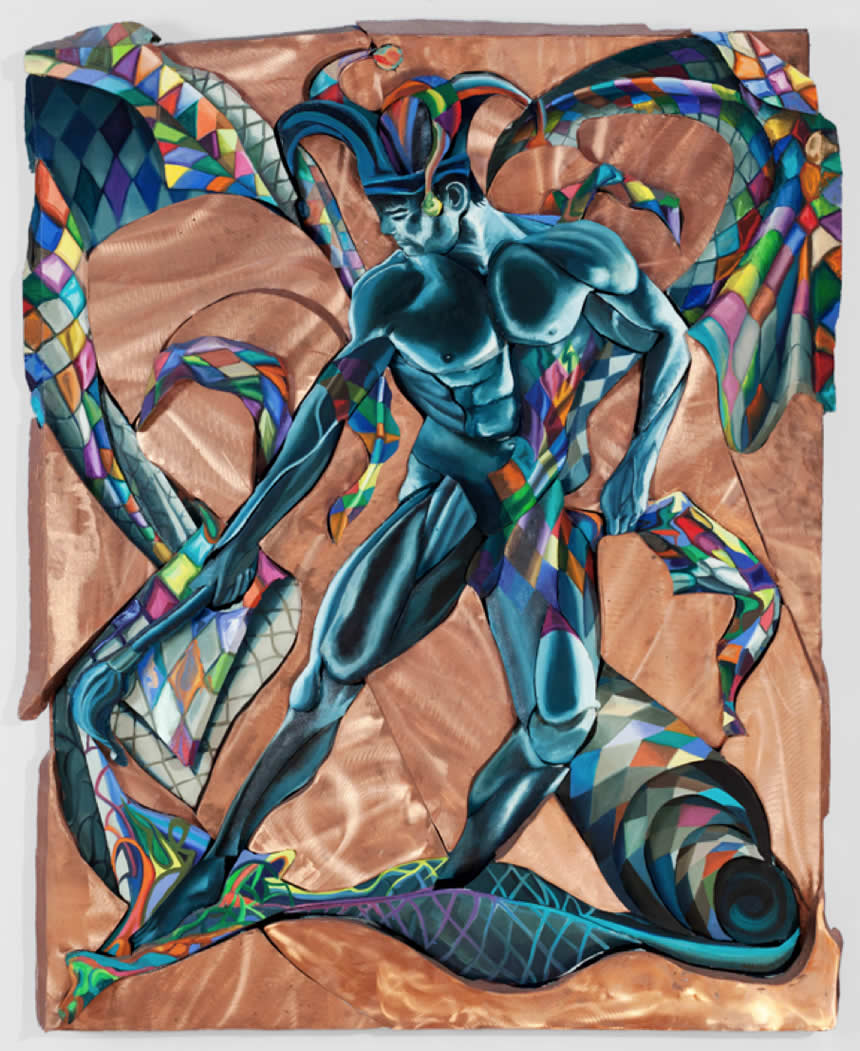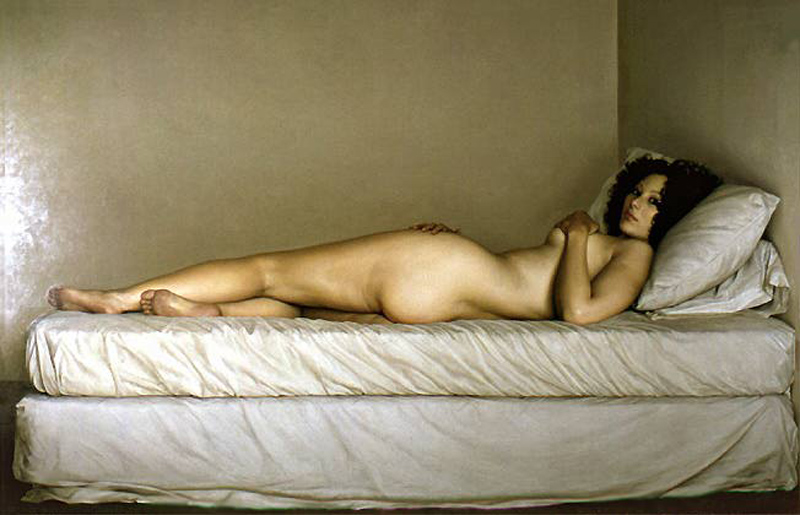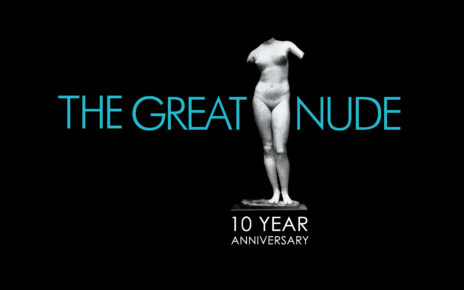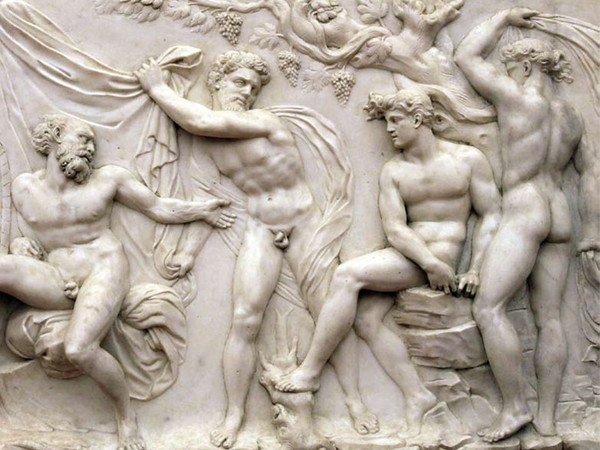Chelsea, New York City: Rob Mango, A Retrospective spans almost four decades, showcasing a selection of flat and sculpted paintings, a construction, and drawings. Curated and managed by Robert Curcio, his selection focuses on the figure animated by paint that has been a constant in Mango’s paintings. Mango’s uniquely contemporary Baroque sensibility of vibrant colors, richly textured surfaces, elaborate construction, sweeping movement, figurative distortions with a dash of Surrealism, courses through depictions of the figure from representational to abstraction. A nuanced aesthetic pleasure tempts the viewer while a narrative mix of art references and personal life engages in a determined conversation.
Coinciding with the exhibition is the launch of Mango’s monograph 100 Paintings: An Artist’s Life in New York City with a forward by critic and writer, Robert Mahoney. Mahoney, who has written extensively on Mango since the mid-80’s, comments – It remains fascinating to see how, over the course of his career, Rob Mango transposes themes, to concentrate on this or that aspect of his whole creative life all over to rise to a new height of creativity as he tumbles through time.
In Amiss in the Abyss, 1989, and The Strong Jester, 1998, Mango appropriates the image of the jester with its long tradition as a representation of the artist’s alter ego. In the earlier two dimensional painting the jester/artist confidently stands in front of the abyss with a fully loaded brush unabashedly engaged in the urgency of painting. Ten years later in The Strong Jester a wall of undulating interlocking metallic shapes encroaches, his costume is unraveling and his head is turned away with a loaded brush held low. The painting, the very notion of which Mango seems to be questioning, is now part sculpture and part painting. The wall and figure are now forms constructed of foam that are wrapped in painted canvas and attached to a support.
No Room for Doubt, 2012, is another sculpted painting of a female nude with flowing hair blowing a kiss. The figure is viewed in profile as an array of curves and angles in motion against a whirlwind of dark greens and blues. The highly polished figure is painted white with bold bright red brushstrokes. Some see this as salacious or demeaning to women, while Mahoney characterizes it … is an entirely non-objectifying way links up to her energy, agency and manner of address, as again exemplified in the wild zig-zag figure with flowing nymph-like hair (nymph referring to the mystique of a sacred space, . .
Installed in a grouping is Woman in High-Backed Chair, 2014, showing Mango’s process from a basic sketch next to the flat painting of it and finally as a fully realized sculpted painting. The sketch is a quick study of a woman sitting in a yoga position on a chair. The second stage is a flat painting focusing on the figure as Mango begins to manipulate the contours of the body. The final sculpted painting is with the woman sitting on an actual chair incorporated into the painting. The textured angular background of greens and earth tones is in motion. Against this the woman calmly sits with arms and legs crossed, her head leaning on her shoulder. She is painted in a cool lavender and yellow on canvas over elongated rolling curves of carved, sanded and beveled foam. All of this is juxtaposed by the presence of the hard silver metal chair.
Book launch and signing with an interview of Mango by Robert Curcio on Thursday, November 20; 6-8pm at the gallery. In his monograph, Mango retells encounters with Robert DeNiro, Bob Dylan, Ted Kennedy, Martin Scorsese, Andy Warhol, Larry Rivers and Wall Street titans, early hopes of Olympic gold, the birth of TriBeCa, opening and running Neo Persona Gallery in the 80’s, the tragedy of 9/11 as it happens in front of him and a tranquil beautiful residency in Tuscany.
Mango’s numerous solo exhibitions include the Duane Street Gallery, Dillon Gallery and Neo Persona Gallery in New York; Galerie L’Orangeraie, France; Radost Gallery, Czech Republic; N.A.M.E. gallery and Walter Kelly Gallery in Chicago, and the Krannert Art Museum University of Illinois. He is included in well over 100 corporate, private and public collections.
For additional information, contact Robert Curcio at 646.220.2557 or curcioprojects@gmail.com




